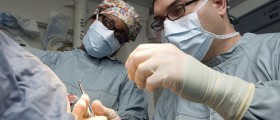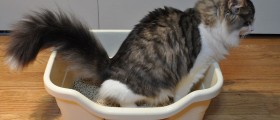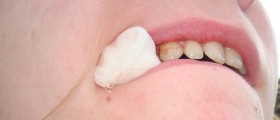
Spaying your cat
You will probably decide to take your female cat to be spayed for a combination of various reasons. Spayed cats don’t wonder around as much as before the procedure and you will know your beloved cat is safer. She will not call in season any more, something that is certainly annoying to cat owners, and will not attract male cats. Above all, you will not have to deal with many kittens and search for the right home for them.
A spay is a permanent method of birth control for cats. It is known as ovariohysterectomy and represents the surgical removal of both the ovaries and uterus of female animals. Spaying is performed under general anesthesia and generally it is a safe and quick procedure. Female cats should be spayed when they are about 6 months old.
Complications after Cat Spaying
The sterilization of female cats is associated with several possible complications that may occur during or after the surgery.
Spayed cats will commonly experience some pain after the procedure. You will notice that your cat is walking stiffly and breathes more heavily. Your cat may tremble, growl, and bite the stitches after recovering from the anesthesia a bit. You may notice that your cat lacks appetite, which is commonly due to pain. Veterinarians recommend reducing your cat’s activity and keeping it inside to relieve the pain. This way you can prevent injuries to the surgical site caused by vigorous activities or other cats as well. Additionally, you can give prescribed painkillers to your cat.
Sometimes, internal bleeding may occur as post-surgical complication after you have your cat spayed. This may happen in case of failure to properly ligate the uterine or ovarian blood vessels. Internal bleeding can be recognized by weakness, pale gums, a distended abdomen, depression and anorexia. Internal bleeding requires immediate medical attention.
Wound infection is another complication of cat spaying. If you don’t prevent your cat from licking the surgical site, bacteria and other pathogens will easily be introduced and the cat will be more susceptible to an infection. Wound infection may occur if the area of incision comes into contact with feces, urine, or dirt too.
It is important not to allow the cat’s incision to get wet. You must regularly check the site of surgery for any signs of wound infection such as swelling, redness, excessive warmth, and (pus-filled) discharge. If you notice any of these signs, inform the veterinarian. Wound infection is commonly treated with antibiotics.
Break down of the skin stitches often occurs in spayed cats. This usually happens because cats lick the wound, or if it is excessively active after their ovariohysterectomy. If you notice incision breakdown in your cat, inform your veterinarian.
Swelling at the spay operation site is a fairly common post-surgical procedure. There are different forms of swelling: inflammatory swelling, seroma, hernia and abscess. Inflammatory swelling can be result of healing process or trauma in the tissues around the incision. Seroma represents formation of a large lump at the surgical site. Hernia represents protrusion of internal organs through the abdominal wall. Abscess is infected seroma which can be hot and painful.
If you are not sure whether your cat is healing and recovering normally after she was spayed, and you notice symptoms that concern you, your vet is always there to check the situation out and make sure your cat stays healthy.














-Arthritis_f_280x120.jpg)

Your thoughts on this
Loading...